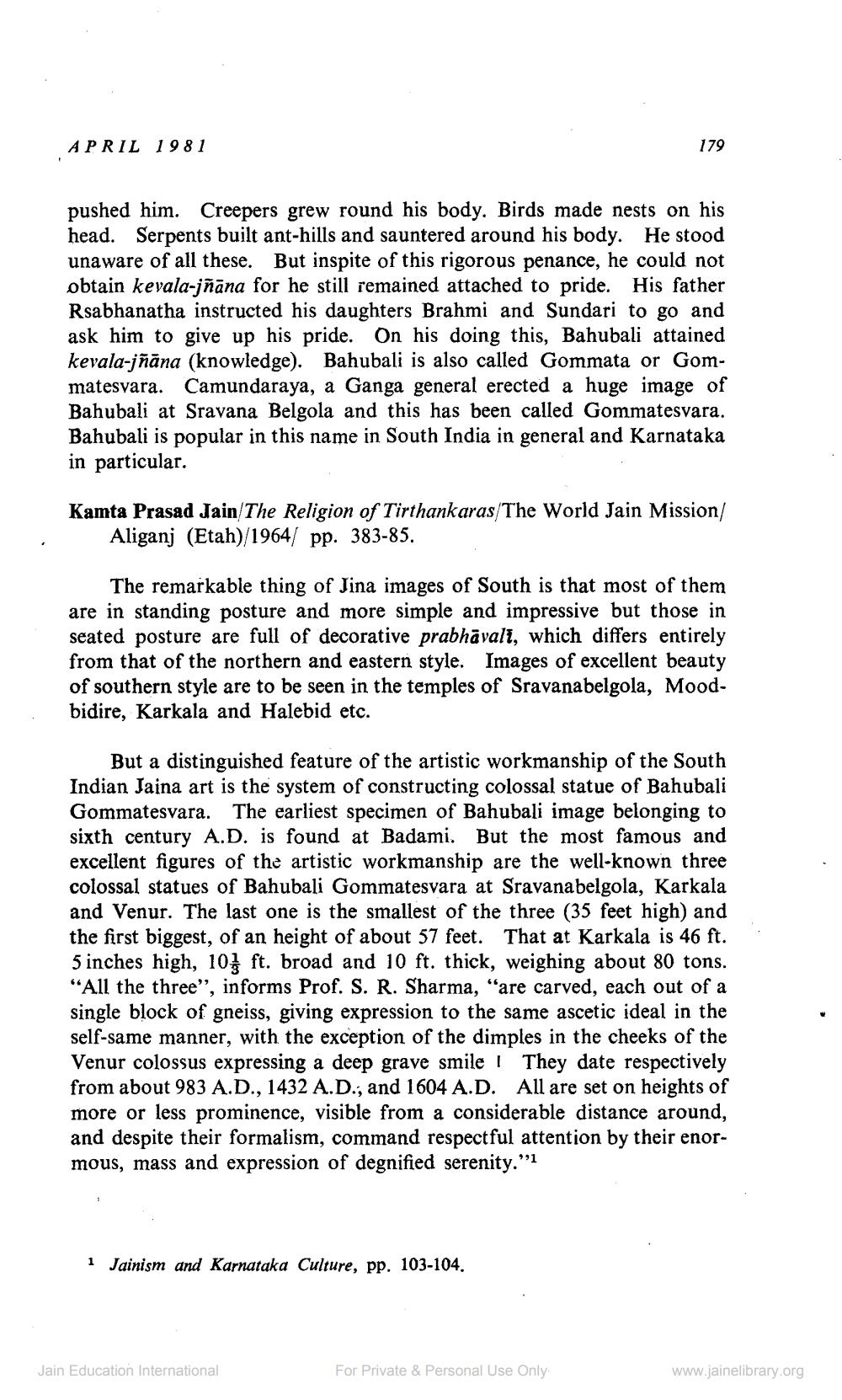________________
APRIL 1981
pushed him. Creepers grew round his body. Birds made nests on his head. Serpents built ant-hills and sauntered around his body. He stood unaware of all these. But inspite of this rigorous penance, he could not obtain kevala-jñāna for he still remained attached to pride. His father Rsabhanatha instructed his daughters Brahmi and Sundari to go and ask him to give up his pride. On his doing this, Bahubali attained kevala-jñāna (knowledge). Bahubali is also called Gommata or Gommatesvara. Camundaraya, a Ganga general erected a huge image of Bahubali at Sravana Belgola and this has been called Gommatesvara. Bahubali is popular in this name in South India in general and Karnataka in particular.
Kamta Prasad Jain/The Religion of Tirthankaras/The World Jain Mission/ Aliganj (Etah)/1964/ pp. 383-85.
179
The remarkable thing of Jina images of South is that most of them are in standing posture and more simple and impressive but those in seated posture are full of decorative prabhāvali, which differs entirely from that of the northern and eastern style. Images of excellent beauty of southern style are to be seen in the temples of Sravanabelgola, Moodbidire, Karkala and Halebid etc.
But a distinguished feature of the artistic workmanship of the South Indian Jaina art is the system of constructing colossal statue of Bahubali Gommatesvara. The earliest specimen of Bahubali image belonging to sixth century A.D. is found at Badami. But the most famous and excellent figures of the artistic workmanship are the well-known three colossal statues of Bahubali Gommatesvara at Sravanabelgola, Karkala and Venur. The last one is the smallest of the three (35 feet high) and the first biggest, of an height of about 57 feet. That at Karkala is 46 ft. 5 inches high, 10 ft. broad and 10 ft. thick, weighing about 80 tons. "All the three", informs Prof. S. R. Sharma, "are carved, each out of a single block of gneiss, giving expression to the same ascetic ideal in the self-same manner, with the exception of the dimples in the cheeks of the Venur colossus expressing a deep grave smile I They date respectively from about 983 A.D., 1432 A.D., and 1604 A.D. All are set on heights of more or less prominence, visible from a considerable distance around, and despite their formalism, command respectful attention by their enormous, mass and expression of degnified serenity."1
1 Jainism and Karnataka Culture, pp. 103-104.
Jain Education International
For Private & Personal Use Only
www.jainelibrary.org




